
Fiordland National Park: The Jewel of New Zealand's South Island
Discover Fiordland National Park, New Zealand's untouched wilderness with majestic fiords, lush rainforests, and world-famous hiking trails. A UNESCO World Heritage site.
Fiordland National Park is a vast and breathtaking wilderness located on New Zealand's South Island. Known for its dramatic landscapes, the park features deep fiords, towering mountains, and lush rainforests. It is a paradise for nature lovers and outdoor enthusiasts alike. One of the park's most famous attractions is Milford Sound, a stunning fiord that offers boat tours, kayaking, and hiking opportunities. The Sound is surrounded by sheer rock faces that rise over a thousand meters, and its waters are home to dolphins, seals, and penguins. Another highlight is Doubtful Sound, often referred to as the 'Sound of Silence' due to its tranquility and remoteness. Accessible via a boat ride across Lake Manapouri and a bus over Wilmot Pass, this fiord offers a less crowded but equally mesmerizing experience. The park also boasts an extensive network of hiking trails, including the world-renowned Milford Track and the challenging Routeburn Track. These trails provide access to some of the most stunning scenery in New Zealand, from alpine meadows to dense forests and cascading waterfalls. Fiordland National Park is also a UNESCO World Heritage site, recognized for its outstanding natural beauty and ecological significance. Whether you're an avid hiker, a keen photographer, or simply someone looking to disconnect from the hustle and bustle, Fiordland offers an unparalleled experience.
Local tips in Fiordland National Park
- Book your Milford Sound cruise in advance, especially during peak seasons.
- Pack for all weather conditions; the park experiences frequent rain and sudden weather changes.
- Consider visiting Doubtful Sound for a less crowded alternative to Milford Sound.
- Bring insect repellent; sandflies can be a nuisance, especially near water.
- Plan extra time for hiking; the trails can be challenging and you’ll want to stop and take in the views.
Fiordland National Park: The Jewel of New Zealand's South Island
Fiordland National Park is a vast and breathtaking wilderness located on New Zealand's South Island. Known for its dramatic landscapes, the park features deep fiords, towering mountains, and lush rainforests. It is a paradise for nature lovers and outdoor enthusiasts alike. One of the park's most famous attractions is Milford Sound, a stunning fiord that offers boat tours, kayaking, and hiking opportunities. The Sound is surrounded by sheer rock faces that rise over a thousand meters, and its waters are home to dolphins, seals, and penguins. Another highlight is Doubtful Sound, often referred to as the 'Sound of Silence' due to its tranquility and remoteness. Accessible via a boat ride across Lake Manapouri and a bus over Wilmot Pass, this fiord offers a less crowded but equally mesmerizing experience. The park also boasts an extensive network of hiking trails, including the world-renowned Milford Track and the challenging Routeburn Track. These trails provide access to some of the most stunning scenery in New Zealand, from alpine meadows to dense forests and cascading waterfalls. Fiordland National Park is also a UNESCO World Heritage site, recognized for its outstanding natural beauty and ecological significance. Whether you're an avid hiker, a keen photographer, or simply someone looking to disconnect from the hustle and bustle, Fiordland offers an unparalleled experience.
When is the best time to go to Fiordland National Park?
Iconic landmarks you can’t miss
Fiordland National Park Visitor Centre
Explore Fiordland National Park Visitor Centre: Your Gateway to New Zealand's Natural Splendor and Adventure.
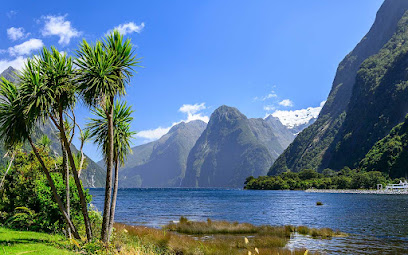
The Chasm Viewing Bridge
Discover the breathtaking beauty of The Chasm Viewing Bridge in Fiordland National Park, where nature's power meets stunning landscapes.
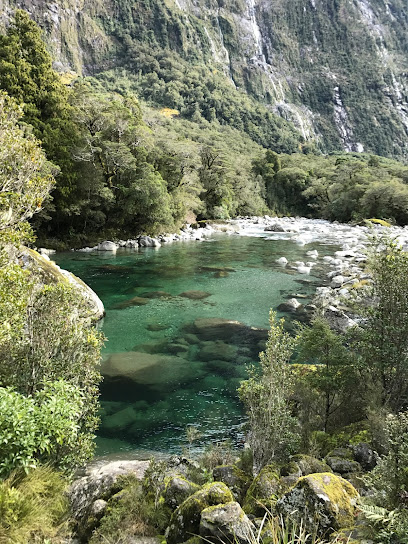
Falls Creek Falls
Experience the awe-inspiring beauty of Falls Creek Falls, a serene escape in Fiordland National Park, perfect for nature lovers and adventurers.
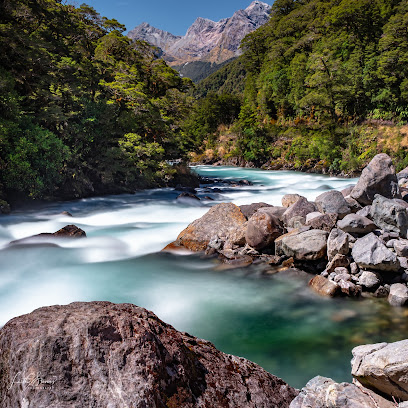
Luxmore Hut
Experience the beauty of Fiordland National Park at Luxmore Hut, a cozy retreat with stunning views and access to breathtaking trails.
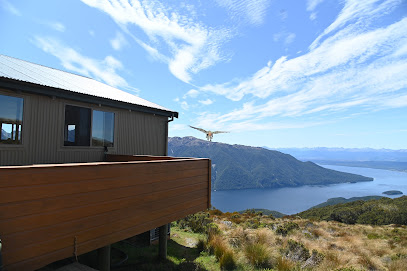
Key Summit Trail
Explore the breathtaking Key Summit Trail in Fiordland National Park, where stunning vistas and lush landscapes await every hiker.

Lake Gunn Nature Walk
Explore the serene beauty of Lake Gunn Nature Walk in Fiordland National Park, a perfect escape for nature lovers and adventure seekers.

Pop's View Lookout
Discover breathtaking vistas and serene landscapes at Pop's View Lookout in Southland, New Zealand, an unforgettable tourist attraction.

Routeburn Track
Experience the breathtaking beauty of Routeburn Track in New Zealand's Fiordland National Park, a must-visit for hiking enthusiasts and nature lovers.

Gertrude Saddle
Explore the stunning Gertrude Saddle in Fiordland National Park, where breathtaking views and challenging hikes await every outdoor enthusiast.

Cascade Creek Historic Camp site
Discover the rich history and breathtaking beauty of Cascade Creek Historic Camp Site in Fiordland National Park, a must-visit for outdoor enthusiasts and history lovers alike.

Eglinton Flats
Discover the serene landscapes and breathtaking views of Eglinton Flats, a must-visit destination in Southland, New Zealand, for nature lovers and outdoor enthusiasts.

Milford Track Trailhead (Sandfly Point)
Discover the breathtaking beauty of the Milford Track at Sandfly Point, a hiker's dream in Fiordland National Park, New Zealand.

Lake Gunn Viewpoint
Experience the breathtaking views and tranquility of Lake Gunn Viewpoint in Fiordland National Park, a must-see for nature lovers and adventurers.

Lake Hauroko Lookout
Experience the tranquil beauty of Lake Hauroko Lookout, a breathtaking scenic spot in Fiordland National Park, New Zealand's natural paradise.
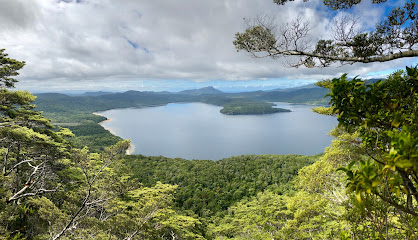
Walker Creek DOC Campsite
Discover the tranquility of Walker Creek DOC Campsite in Fiordland National Park, a must-visit for nature lovers and camping enthusiasts in New Zealand.

Unmissable attractions to see
Te Anau Glowworm Caves - RealNZ
Experience the magic of nature at Te Anau Glowworm Caves, where thousands of glowworms illuminate the stunning underground world of New Zealand.

Fiordland Trips & Tramps
Explore the breathtaking Fiordland National Park with Trips & Tramps — guided tours showcasing nature's beauty in New Zealand's UNESCO World Heritage site.

Fiordland Tours
Discover the breathtaking beauty of Fiordland National Park with guided tours that immerse you in New Zealand's stunning landscapes and rich wildlife.

Wilderness Scientific Reserve
Discover the untouched beauty and diverse wildlife of Wilderness Scientific Reserve, a premier nature preserve in New Zealand's stunning Fiordland region.

Christie Falls
Explore the stunning Christie Falls in Fiordland National Park, a breathtaking waterfall surrounded by natural beauty and adventure.

Doubtful Sound View Point
Discover the stunning natural beauty of Doubtful Sound View Point, a must-see tourist attraction in Southland, New Zealand.

Te Anau Trout Observatory
Explore the enchanting underwater world at Te Anau Trout Observatory, a unique attraction showcasing New Zealand's trout species in stunning natural surroundings.

Moturau Hut
Experience the breathtaking beauty of Moturau Hut on the Kepler Track, a perfect retreat for hikers in Fiordland National Park, New Zealand.

Lake Mistletoe Walking track
Experience the breathtaking beauty of Lake Mistletoe Walking Track in Fiordland National Park, a must-visit destination for nature lovers and hiking enthusiasts.
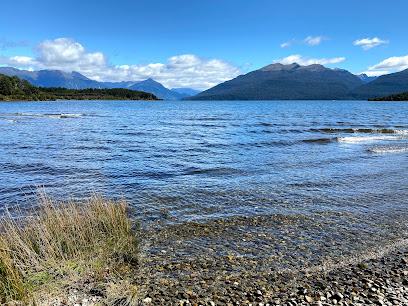
Iris Burn Hut
Experience the ultimate retreat at Iris Burn Hut, a serene accommodation along New Zealand's iconic Kepler Track amidst stunning Fiordland landscapes.

Rakatu Wetlands
Explore the captivating tranquility of Rakatu Wetlands, a natural sanctuary in Blackmount showcasing diverse ecosystems and vibrant wildlife.

Luxmore Cave
Explore the stunning Luxmore Cave in Fiordland National Park, a natural wonder filled with breathtaking limestone formations and unique ecosystems.

Great Walks
Explore the breathtaking landscapes of New Zealand's Great Walks, where adventure meets stunning natural beauty in every step.

Luxmore Summit walk
Discover the breathtaking views and natural wonders of Luxmore Summit Walk in Fiordland National Park, a hiker's paradise in New Zealand.
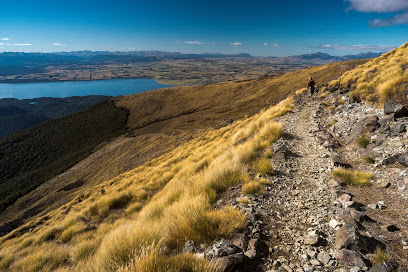
Fiordland Trails Trust - Lake2Lake Trail
Experience the stunning beauty of Fiordland's Lake2Lake Trail, a breathtaking journey through lush landscapes and scenic vistas.

Essential places to dine
Sandfly Cafe Te Anau
Experience delightful breakfasts and fresh coffee at Sandfly Cafe Te Anau - your perfect start before exploring Fiordland's wonders.

The Ranch Bar & Grill
Experience family-friendly dining at The Ranch Bar & Grill in Te Anau, where hearty meals meet warm hospitality amidst stunning New Zealand landscapes.

The Fat Duck
Experience exceptional New Zealand cuisine at The Fat Duck in Te Anau—where local flavors meet culinary creativity.
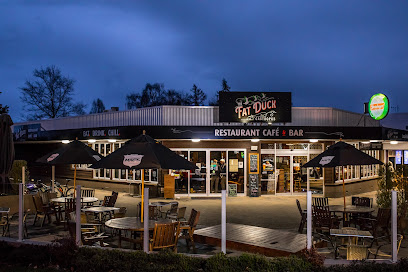
Redcliff Restaurant and bar
Experience exquisite dining at Redcliff Restaurant and Bar in Te Anau – where stunning views meet delectable local cuisine.
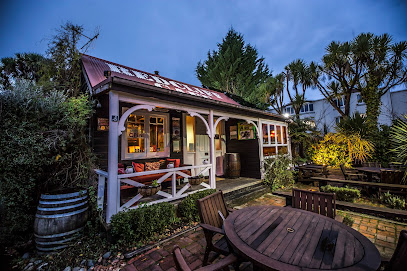
Ristorante Pizzeria Paradiso
Experience authentic Italian cuisine at Ristorante Pizzeria Paradiso in Te Anau – where every dish is crafted with passion and tradition.

Naturally Fiordland
Savor local flavors at Naturally Fiordland, where culinary excellence meets stunning views in Te Anau's heart.

Glow Worm Restaurant
Experience the flavors of New Zealand at Glow Worm Restaurant in Te Anau – where local ingredients meet culinary artistry.

Pio Pio Restaurant
Experience delightful local cuisine at Pio Pio Restaurant nestled in Fiordland National Park’s breathtaking landscapes.

Jimmy Cook's Kiwi Kitchen
Experience authentic New Zealand cuisine at Jimmy Cook's Kiwi Kitchen with stunning lakefront views in Te Anau.

Markets, malls and hidden boutiques
FreshChoice Te Anau
Explore FreshChoice Te Anau for all your grocery needs, featuring local produce and international delights in the heart of Fiordland.

Four Square Te Anau
Discover Four Square Te Anau for all your grocery needs while exploring the breathtaking landscapes of Fiordland, New Zealand.

Kiwi Country
Explore Kiwi Country in Te Anau for unique men’s and women’s fashion that captures the spirit of New Zealand.

Mitre 10 Te Anau
Discover top-quality home improvement supplies and expert advice at Mitre 10 Te Anau, your go-to hardware store in New Zealand's stunning Fiordland region.
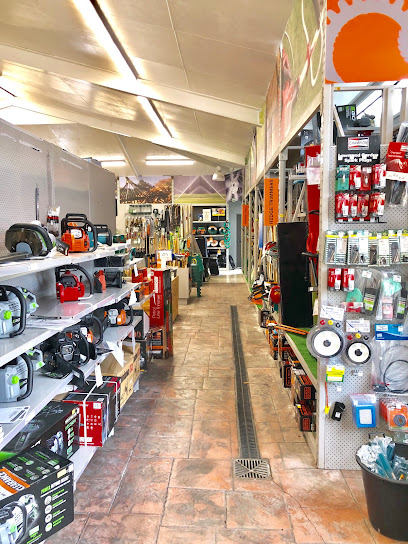
Wild Rides - Bike Fiordland
Experience Fiordland's breathtaking landscapes on two wheels with Wild Rides - Bike Fiordland, your ultimate cycling adventure hub.

Paper Plus Te Anau
Explore Paper Plus Te Anau: Your go-to spot for books, stationery, and local treasures in the heart of New Zealand's stunning landscapes.

Outside Sports Te Anau
Your ultimate destination for outdoor gear in Te Anau, New Zealand, offering everything from bicycles to camping essentials for the perfect adventure.
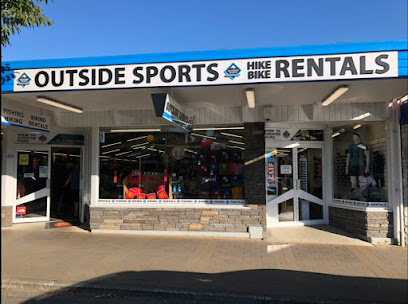
Fiordland Nurseries & Mower Centre
Discover a gardening paradise at Fiordland Nurseries & Mower Centre, where lush greenery meets expert advice in stunning Te Anau, New Zealand.

Luxmore Souvenirs 南方禮品中心
Explore Luxmore Souvenirs for an authentic Kiwi shopping experience with unique gifts and local crafts in the heart of Te Anau.

Hospice Shop
Explore the Hospice Shop in Te Anau for unique second-hand treasures while supporting local hospice services.

Fiordland Frontier Supplies
Explore the best outdoor clothing and equipment at Fiordland Frontier Supplies, your adventure starts here in Te Anau, New Zealand.

Simply New Zealand - Te Anau - Lakefront
Discover unique Kiwi gifts and souvenirs at Simply New Zealand in Te Anau, where local craftsmanship meets unforgettable travel memories.
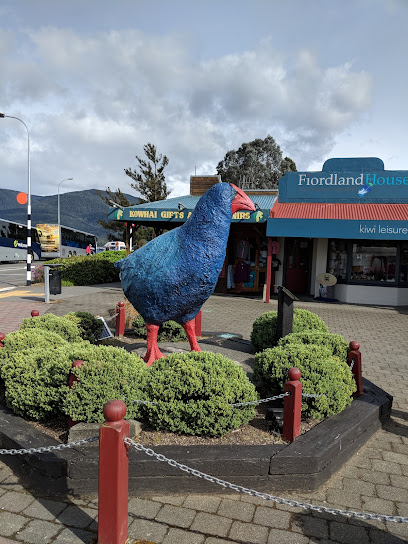
Flora Fauna
Explore Flora Fauna: A Unique Gift Shop and Art Gallery in Queenstown Celebrating Local Culture and Creativity.

The Barn
Explore The Barn in Queenstown for unique gifts, antique treasures, and delightful baby clothing in a charming retail village.

RD Petroleum Lakeside On the Spot
Explore the wonders of Te Anau with all your travel essentials at RD Petroleum Lakeside On the Spot, the ultimate convenience store and fueling station.
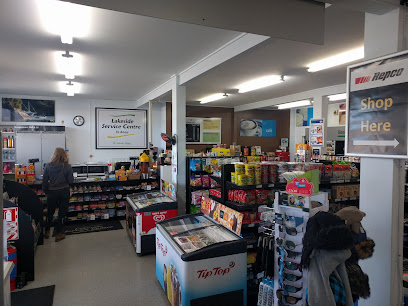
Essential bars & hidden hideouts
Sandfly Cafe Te Anau
Experience the charm of Sandfly Cafe in Te Anau, where every meal is a celebration of local flavors and warm hospitality.

The Ranch Bar & Grill
Savor delightful New Zealand cuisine in a family-friendly atmosphere at The Ranch Bar & Grill in Te Anau.

The Fat Duck
Discover the culinary delights at The Fat Duck, where local flavors meet a cozy atmosphere in the heart of Te Anau, New Zealand.

Redcliff Restaurant and bar
Experience the best of Fiordland at Redcliff Restaurant and Bar, where culinary delights meet stunning views and live music.
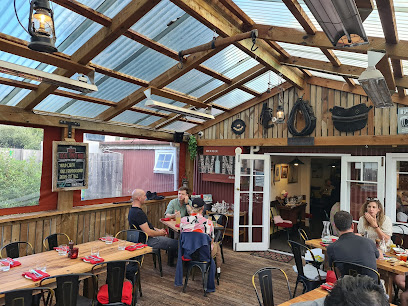
Radha's Indian Restaurant
Experience the rich flavors and spices of authentic Indian cuisine at Radha's Indian Restaurant in Te Anau.

The Moose Bar and Armadillos Restaurant
Discover The Moose Bar and Armadillos Restaurant, a vibrant pub in Te Anau with stunning lake views and a diverse menu for all tastes.
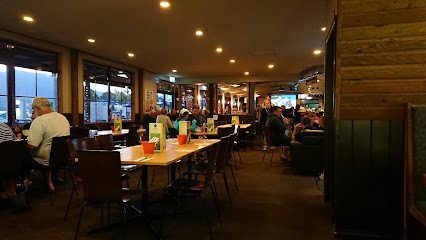
La Toscana Pizzeria
Experience the essence of Italy at La Toscana Pizzeria in Te Anau, where every dish is crafted with passion and served with warmth.

Bailiez Cafe & Bar
Experience the best of Te Anau at Bailiez Cafe & Bar, where local flavors meet a cozy atmosphere in a perfect setting for relaxation.
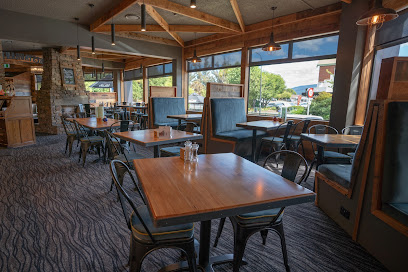
Hollyford Cafe
Discover the flavors of New Zealand at Hollyford Cafe, a cozy culinary haven in Te Anau, offering fresh, local cuisine in a charming atmosphere.

Milford Road Merchant
Discover the cozy Milford Road Merchant in Te Anau – your perfect stop for premium coffee and delicious takeaway meals amidst New Zealand's natural beauty.

Manapouri Lakeview Cafe and Bar
Experience the beauty of Lake Manapouri while enjoying delicious meals and drinks at the Lakeview Cafe and Bar - a perfect spot for relaxation.

Black Dog Bar
Discover the vibrant culture and exquisite cocktails of Black Dog Bar in Te Anau, the perfect spot for relaxation and culinary delight.

Pio Pio Restaurant
Experience the essence of New Zealand cuisine at Pio Pio Restaurant, nestled in the stunning Fiordland National Park.
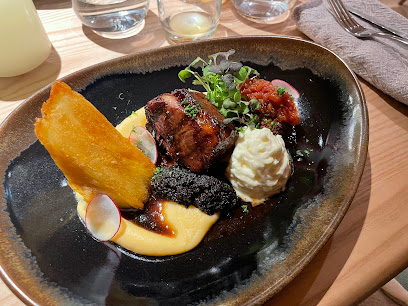
Armadillos Te Anau
Discover local flavors at Armadillos Te Anau, where comfort food meets scenic views of the stunning Fiordland region.

The Explorer Bar
Discover the cozy atmosphere of The Explorer Bar in Te Anau, where local wines and stunning views create an unforgettable experience for every traveler.

Local Phrases about Fiordland National Park
-
- HelloKia ora
[key-ah or-ah] - GoodbyeHaere rā
[high-ray rah] - YesĀe
[eye] - NoKāo
[cow] - Please/You're welcomeTēnā koe
[ten-ah koi] - Thank youKia ora
[key-ah or-ah] - Excuse me/SorryWhakapāha
[fah-ka-pa-ha] - How are you?Kei te pēhea koe?
[key tay pay-hair ha koi] - Fine. And you?Kei te pai. Ā, koe?
[key tay pie. eye, koi?] - Do you speak English?Kōrerotia koe i te reo Pākehā?
[core-air-oh-tee-ah koi ee tay ray-oh pah-keh-ha] - I don't understandKāore au e mārama
[cow-or-ay ow eh mah-rah-ma]
- HelloKia ora
-
- I'd like to see the menu, pleaseMe tirohia te menewa, tēnā
[may tee-raw-he-ah tay men-eh-wah, ten-ah] - I don't eat meatKāore au e kai mīti
[cow-or-ay ow eh kai mee-tee] - Cheers!Kia ora!
[key-ah or-ah] - I would like to pay, pleaseMe utu, tēnā
[may oo-too, ten-ah]
- I'd like to see the menu, pleaseMe tirohia te menewa, tēnā
-
- Help!Āwhina!
[eye-wee-nah] - Go away!Haere atu!
[high-ray ah-too] - Call the Police!Karanga i te Pirihimana!
[kah-rang-ah ee teh pee-ree-hee-man-ah] - Call a doctor!Karanga ki te Rata!
[kah-rang-ah kee teh rah-tah] - I'm lostI wareware ahau
[ee wah-reh-wah-reh ow-ho] - I'm illKua mate ahau
[koo-ah mah-tay ow-ho]
- Help!Āwhina!
-
- I'd like to buy...Me hoko...
[may haw-kaw] - I'm just lookingKei te titiro ahau
[key tay tee-tee-raw ow-ho] - How much is it?E hia ana?
[eh hee-ah ah-nah] - That's too expensiveHe roa rawa te utu
[heh raw-ah raw-wah tay oo-too] - Can you lower the price?Ka taea e koe te whakaiti i te utu?
[kah tie-ah eh koi teh fah-kai-tee ee teh oo-too]
- I'd like to buy...Me hoko...
-
- What time is it?He aha te wā?
[heh ah-ha teh wah] - It's one o'clockKotahi karaka
[kaw-tah-hee kah-rah-kah] - Half past (10)Tekau mā rima
[teh-kow mah ree-mah] - MorningAhiahi
[ah-hee-ah-hee] - AfternoonAhiahi
[ah-hee-ah-hee] - EveningPō
[paw] - YesterdayInāianei
[ee-nah-ee-ah-nay] - TodayTēnei rā
[ten-ay rah] - TomorrowĀpōpō
[eye-paw-paw] - 1Tahi
[tah-hee] - 2Rua
[roo-ah] - 3Toru
[toh-roo] - 4Whā
[fah] - 5Rima
[ree-mah] - 6Ono
[oh-no] - 7Whitu
[fee-too] - 8Waru
[wah-roo] - 9Iwa
[ee-wah] - 10Tekau
[teh-kow]
- What time is it?He aha te wā?
-
- Where's a/the...?Kei hea te...?
[key hair heh teh] - What's the address?He aha te wāhitau?
[heh ah-ha teh wah-hee-tow] - Can you show me (on the map)?Taea e koe te whakaatu ki ahau (i runga i te mahere)?
[tie-ah eh koi teh fah-kow-too key ow-how ee roon-gah ee teh mah-hair-ay] - When's the next (bus)?Ahea te taha whakamua (autobus)?
[ah-heh-ah teh tah-hah fah-kah-moo-ah ow-toe-boos] - A ticket (to ....)He tiki (ki ....)
[heh tee-kee kee]
- Where's a/the...?Kei hea te...?
History of Fiordland National Park
-
Fiordland National Park, located in the southwestern corner of New Zealand's South Island, was primarily shaped by glacial action over millions of years. Massive glaciers carved out the deep fiords, steep valleys, and rugged landscape that define the park today. The most famous of these fiords is Milford Sound, which was named after Milford Haven in Wales and is considered one of the most stunning natural attractions in the world.
-
Fiordland has been known to the Maori people for centuries, and it holds significant cultural and spiritual importance. Maori legend attributes the creation of Fiordland to the demi-god Tu-te-raki-whanoa, who carved out the fiords with his adze. The area was used by Maori for hunting, fishing, and gathering pounamu (greenstone), which was highly valued and traded extensively.
-
European exploration of Fiordland began in the late 18th century. In 1773, Captain James Cook and his crew aboard the HMS Resolution were the first Europeans to sight and chart parts of the region. Cook named several places within Fiordland, including Dusky Sound, which became an important anchorage and base for further exploration. Early European explorers were drawn to Fiordland's rugged beauty and the potential for resources such as timber and seals.
-
Throughout the early 19th century, Fiordland became a hub for sealing and whaling activities. Sealing gangs operated in the fiords, and the region's remote and sheltered waters provided ideal conditions for whaling ships. However, over-exploitation led to a sharp decline in seal and whale populations, and by the mid-1800s, these industries had largely collapsed.
-
Fiordland National Park was officially established in 1952, covering an area of over 12,500 square kilometers. The park was created to protect the unique and pristine environment of the fiords, mountains, and rainforests. It has since become a UNESCO World Heritage Site as part of the Te Wahipounamu – South West New Zealand World Heritage Area, recognized for its outstanding natural values and geological significance.
-
Conservation efforts in Fiordland have been ongoing, with a focus on preserving its unique flora and fauna. The park is home to several endangered species, including the kakapo (a flightless parrot) and the takahe (a flightless bird once thought extinct). Significant efforts have been made to control invasive species, such as stoats and rats, which threaten native wildlife. Fiordland's remote and rugged terrain presents both challenges and opportunities for conservation work.
-
Tourism in Fiordland began to develop in the mid-20th century, with Milford Sound becoming a major draw for visitors. The construction of the Homer Tunnel in 1953 made the area more accessible by road. Today, Fiordland is a popular destination for nature lovers, hikers, and adventurers from around the world. Key attractions include the Milford Track, one of New Zealand's Great Walks, and scenic cruises through the fiords.
Fiordland National Park Essentials
-
Fiordland National Park is located in the southwestern part of New Zealand's South Island. The nearest large town is Te Anau, which serves as the main gateway to the park. To reach Fiordland, you can fly into Queenstown International Airport, which is about a 2-hour drive from Te Anau. From Queenstown, you can rent a car, take a bus, or arrange for a shuttle service to Te Anau. Alternatively, you can drive directly from Christchurch, which takes approximately 8 hours.
-
Once in Te Anau, there are several ways to explore Fiordland National Park. Car rentals are a popular option, providing flexibility to visit various sites at your own pace. Guided tours and shuttle services are also available and can offer valuable insights from local guides. For specific destinations like Milford Sound and Doubtful Sound, boat tours and scenic flights are highly recommended. Public transport within the park is limited, so planning your transportation in advance is advisable.
-
The official currency in New Zealand is the New Zealand Dollar (NZD). Credit and debit cards are widely accepted in Te Anau and at most tourist facilities within Fiordland National Park. However, it's a good idea to carry some cash for smaller establishments or remote areas where card payment might not be available. ATMs are available in Te Anau for cash withdrawals.
-
Fiordland National Park is generally a very safe destination for tourists. Crime rates are low, but it's always wise to take standard precautions such as securing your valuables and being aware of your surroundings. The remote nature of the park means that some areas are isolated and may have limited access to immediate help. Always inform someone of your plans if you're venturing into remote areas, and carry a reliable means of communication.
-
In case of an emergency, dial 111 for police, fire, or medical assistance. The nearest hospital is in Invercargill, about a 2-hour drive from Te Anau. For minor health issues, there are medical facilities and pharmacies in Te Anau. It's recommended to have travel insurance that covers medical emergencies and adventure activities. If you're in a remote area of the park, emergency beacons and satellite phones can be lifesavers.
-
Fashion: Do wear comfortable, weather-appropriate clothing and sturdy hiking boots. Layering is key as weather can change rapidly. Religion: Do respect the natural environment and local customs. There are no specific religious customs to follow within the park, but general respect for nature and fellow travelers is expected. Public Transport: Do plan your routes and schedules in advance as public transport options are limited. Greetings: Do greet people with a friendly smile or a simple 'Kia Ora,' which is a common Maori greeting. Eating & Drinking: Do try local foods and beverages available in Te Anau. Don't litter; always carry your trash with you until you find a proper disposal bin.
-
To experience Fiordland National Park like a local, visit during the shoulder seasons (spring and autumn) to avoid the peak tourist crowds. Take advantage of local knowledge by joining guided tours or talking to locals in Te Anau. Don't miss the Kepler Track, one of New Zealand's Great Walks, for a more immersive experience. Also, consider taking a scenic cruise in Doubtful Sound, which is less crowded but equally stunning as Milford Sound.
Trending Landmarks in Fiordland National Park
-
Fiordland National Park Visitor Centre
-
The Chasm Viewing Bridge
-
Falls Creek Falls
-
Luxmore Hut
-
Key Summit Trail
-
Lake Gunn Nature Walk
-
Pop's View Lookout
-
Routeburn Track
-
Gertrude Saddle
-
Cascade Creek Historic Camp site
-
Eglinton Flats
-
Milford Track Trailhead (Sandfly Point)
-
Lake Gunn Viewpoint
-
Lake Hauroko Lookout
-
Walker Creek DOC Campsite
Nearby Cities to Fiordland National Park
-
Things To Do in Invercargill
-
Things To Do in Wanaka
-
Things To Do in Dunedin
-
Things To Do in Timaru
-
Things To Do in Greymouth
-
Things To Do in Christchurch
-
Things To Do in Kaikoura
-
Things To Do in Nelson
-
Things To Do in Blenheim
-
Things To Do in Wellington
-
Things To Do in Masterton
-
Things To Do in Whanganui
-
Things To Do in Palmerston North
-
Things To Do in New Plymouth
-
Things To Do in Napier













